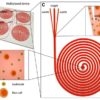
Soft robotics is a growing field, especially for soft robots mimicking simple living organisms and the so-called Bio-bots1. These Bio-bots combine soft-materials (skeleton) with muscle cells, (muscle or motor) and…

Soft robotics is a growing field, especially for soft robots mimicking simple living organisms and the so-called Bio-bots1. These Bio-bots combine soft-materials (skeleton) with muscle cells, (muscle or motor) and…
This blog gives an overview of the many segments of the microfluidics industry and its future trends. It also highlights the challenges of commercializing microfluidic products. Our guest bloggers have been carefully selected to give a fresh perspective on the above topics, and the articles are solely the opinion of the authors. Contact The Circle to share your opinion as a guest author.
 Bridging the micro to the nanoscale – how to facilitate the transition to nanofluidic devices as new standard in life sciences August 5, 2020
Bridging the micro to the nanoscale – how to facilitate the transition to nanofluidic devices as new standard in life sciences August 5, 2020 Microfluidics and Approval Bottlenecks in a Pandemic June 10, 2020
Microfluidics and Approval Bottlenecks in a Pandemic June 10, 2020 Applications of inertial microfluidic focusing (with the focus on commercial products ) April 1, 2020
Applications of inertial microfluidic focusing (with the focus on commercial products ) April 1, 2020We are the community of individuals and companies who share one goal: Help To Commercialize Microfluidics. Join us!
Information presented on this website under the Blog section is the opinion of the individual contributors and does not reflect the general views of The Microfluidic Circle moderators, uFluidix company or the public at large.
E-mail: info[at]ufluidix.com
Website: ufluidix.com
© 2025 The MicroFluidic Circle.
